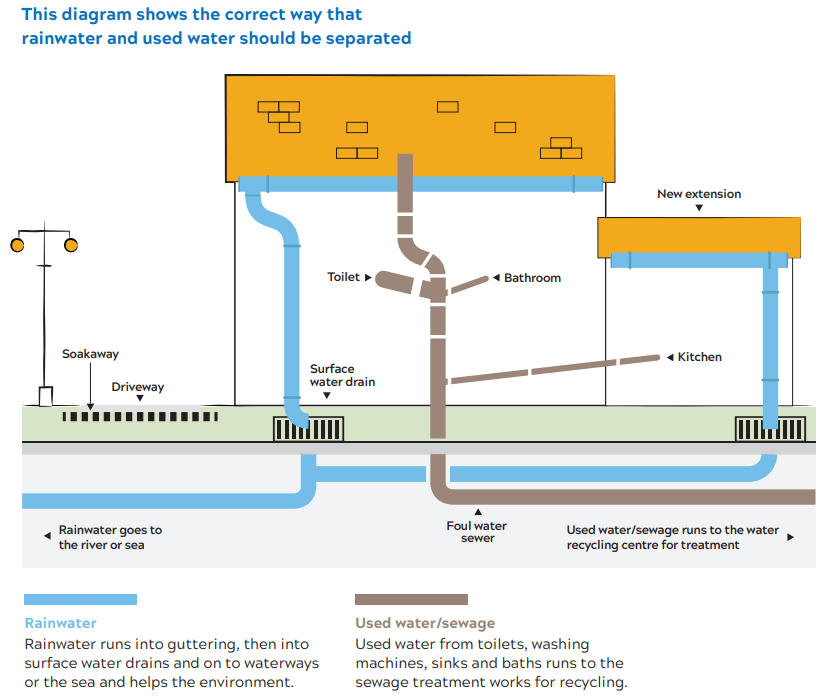{{selectedAlertBand.alertDescription}}
{{selectedAlertBand.incident.heading}}
Message last updated - Wednesday 10th December 2025
{{selectedAlertBand.incident.heading}}
Message last updated - Wednesday 10th December 2025
Message last updated - Wednesday 10th December 2025
{{selectedAlertBand.alertLinkText}} {{selectedAlertBand.alertLinkText}}
For further updates subscribe
How to avoid connecting to the wrong drain and polluting your local environment
Toilets, dishwashers and washing machines are sometimes plumbed into the wrong pipe. When this happens, the dirty water goes directly into our rivers, instead of going to our water recycling centres.
What is a misconnection?
A misconnection is where drainage from your home has been connected to the wrong part of the sewer. This page contains information you’ll need to know if you’re making any improvements or alterations at home that need any kind of drainage. That’s anything from connecting a toilet, sink, shower, or washing machine, or changing or reconnecting your existing drainage connections in any way (like building a new extension with its own guttering or putting drainage channels into your driveway).

Why is it important to avoid misconnections?
If bathroom drainage is misconnected to the surface water network, dirty water and waste will end up polluting your local rivers and streams. If home surface water drainage (i.e. rain) is misconnected to the foul network, it puts unnecessary extra water into the sewers, filling them to capacity. This leads to wastewater backing up and flooding people's homes or out of manholes.
Who’s responsible for sorting a misconnection?
It's important to know that it's usually the property owner who's responsible for sorting out any misconnections at their home, even if they were made before they owned the property. If a misconnection isn't put right, the homeowner may be liable for a fine.
How you can avoid misconnections
Here's a handy list to run through or check with your builder or plumber:
Are you installing a new toilet, sink or appliances?
Are you connecting any new surface drainage?
Do you know the location of the sewer you want to connect to and where you want to connect to it?
Have you double checked you have the correct sewer?
Do you know who owns the sewer you're connecting to?
Are you connecting directly to a public sewer?
How to check your pipework connections: